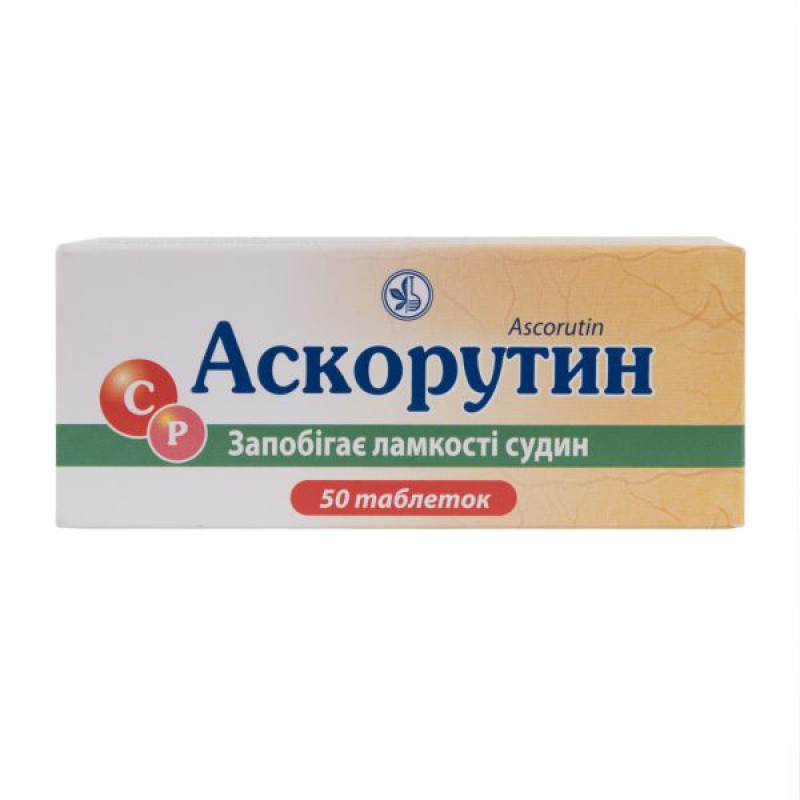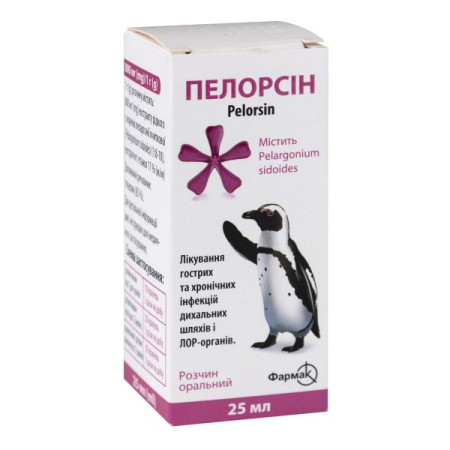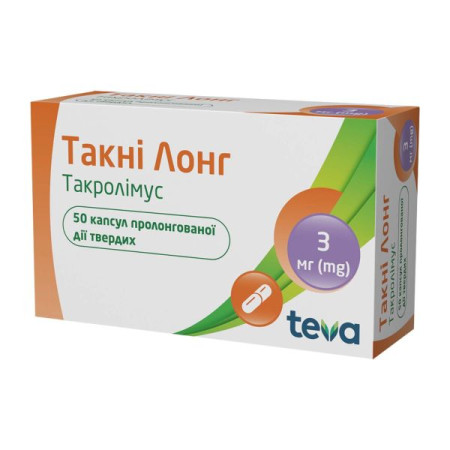Ascorutin tablets blister No. 50

Instructions for Ascorutin tablets blister No. 50
Composition
active ingredients: 1 tablet contains ascorbic acid (vitamin C) 50 mg, rutin (rutoside trihydrate) 50 mg;
excipients: sugar, potato starch, calcium stearate, talc.
Dosage form
Pills.
Main physicochemical properties: round tablets with a flat surface with beveled edges and a score, light yellow with a greenish tint with inclusions.
Pharmacotherapeutic group
Capillary stabilizing agents. Bioflavonoids.
ATX code C05C A51.
Pharmacological properties
Pharmacodynamics
A combined medicinal product, the action of which is due to the effects of the components that make up its composition.
Rutin (vitamin P) promotes the conversion of ascorbic acid to dehydroascorbic acid and prevents the further transformation of the latter into diketugulonic acid. Therefore, most of the effects of rutin are mediated by ascorbic acid.
Rutin in combination with ascorbic acid reduces capillary permeability and fragility (including by inhibiting hyaluronidase activity), strengthens the vascular wall, reduces platelet aggregation, has an anti-inflammatory effect, antioxidant properties, and participates in redox processes.
In addition, rutin has such effects as reducing the exudation of the liquid part of blood plasma and diapedesis of blood cells through the vascular wall; choleretic and mild antihypertensive effects.
In patients with chronic venous insufficiency, rutin leads to a decrease in edematous and painful syndromes, trophic disorders, a decrease or disappearance of paresthesias and seizures. It helps to reduce the severity of side effects of radiotherapy (cystitis, enteroproctitis, dysphagia, skin erythema), and also slows down the progression of diabetic retinopathy.
Pharmacokinetics
Each vitamin included in the composition of the drug undergoes its own transformations. Ascorbic acid is rapidly absorbed mainly in the duodenum and small intestine. 30 minutes after administration, the content of ascorbic acid in the blood increases markedly, its uptake by tissues begins, while it is first converted into dehydroascorbic acid, which penetrates cell membranes without energy expenditure and is quickly restored in the cell. Ascorbic acid in tissues is found almost exclusively intracellularly, determined in three forms - ascorbic, dehydroascorbic acids and ascorbigen (bound ascorbic acid). It is distributed unevenly between organs. A large amount of it is found in the endocrine glands, especially in the adrenal glands, and to a lesser extent in the brain, kidneys, liver, cardiac and skeletal muscles. The content of ascorbic acid in leukocytes and platelets is higher than in blood plasma. It is metabolized and excreted by the kidneys up to 90% in the form of oxalate, partly in the free form.
Rutin, absorbed in the digestive tract, promotes the transport and deposition of ascorbate. It is excreted in the unchanged form of metabolites, mainly with bile and to a lesser extent with urine.
The half-life is 10-25 hours.
Indication
Deficiency of rutin and ascorbic acid. As part of complex therapy for diseases accompanied by increased vascular permeability. Prevention of colds and reduction of flu symptoms. To increase immunity.
Contraindication
Hypersensitivity to the components of the drug. Increased blood clotting, thrombophlebitis, tendency to thrombosis, diabetes mellitus, gout, urolithiasis with the formation of urate stones, cystinuria, hypokalemia and hypercalcemia, oxaluria, severe kidney disease, simultaneous use with sulfonamides or aminoglycosides.
Interaction with other medicinal products and other types of interactions
The absorption of the drug is reduced when used simultaneously with acetylsalicylic acid, oral contraceptives, and when consuming alkaline drinks, fresh fruit or vegetable juices.
Ascorbic acid at a dose of ≥ 1 g increases the bioavailability of oral contraceptives (estrogens, including ethinyl estradiol), increases the blood concentration of salicylates, enhancing their side effects (risk of crystalluria, effect on the gastric mucosa).
Acetylsalicylic acid, barbiturates, tetracyclines: increased urinary excretion of ascorbic acid.
Penicillin (including benzylpenicillin), tetracycline, iron preparations: high doses of ascorbic acid may increase their absorption and concentration in the blood.
Heparin, indirect anticoagulants, phenothiazines, fluphenazine, sulfonamide drugs, aminoglycoside antibiotics: reduced effectiveness of these drugs.
Cyclosporine A: possible reduction in its bioavailability.
When used simultaneously with B vitamins, a mutual enhancement of the therapeutic effect is noted. High doses of ascorbic acid affect the resorption of vitamin B12.
When using high doses of ascorbic acid, the half-life of corticosteroids and paracetamol increases (this interaction has no clinical consequences when using therapeutic doses).
Calcitonin: increases the rate of absorption of ascorbic acid.
When using high doses of ascorbic acid, renal excretion of amphetamine increases.
Aluminum antacids: it should be noted that ascorbic acid promotes the absorption of aluminum from the intestine; increased urinary aluminum excretion is possible. The combined use of antacids and ascorbic acid is not recommended, especially for patients with renal insufficiency.
With long-term use (more than 4 weeks), the drug should not be prescribed simultaneously with cardiac glycosides, antihypertensive drugs or non-steroidal anti-inflammatory drugs, as it may enhance their effects.
Ascorbic acid increases the excretion of oxalates in the urine, thus increasing the risk of forming oxalate stones in the urine.
Combined use of very high doses of ascorbic acid with amygdalin (complementary medicine) may increase the risk of cyanide toxicity.
Smoking, alcohol: reduce the concentration of ascorbate in blood plasma.
Disulfiram: prolonged use of large doses of ascorbic acid inhibits the disulfiram-alcohol reaction.
Ascorbic acid in large doses (more than 2 g/day) may affect the results of biochemical determinations of creatinine, uric acid and glucose levels in blood and urine samples, determination of inorganic phosphates, liver enzymes and bilirubin in the blood. Fecal occult blood screening test may be falsely negative.
Application features
Simultaneous use of the drug with alkaline drinks, fresh fruit or vegetable juices reduces the absorption of vitamin C. Absorption of ascorbic acid may be impaired in intestinal dyskinesias, enteritis, and achilia.
Because ascorbic acid increases iron absorption, its use in high doses can be dangerous for patients with hemochromatosis, thalassemia, polycythemia, leukemia, and sideroblastic anemia.
Patients with high iron levels in the body should use the drug in minimal doses.
Ascorbic acid should be used with caution in the treatment of patients with glucose-6-phosphate dehydrogenase deficiency and patients with a history of kidney disease.
With prolonged use of high doses of ascorbic acid, kidney function, blood pressure, and pancreatic function should be monitored.
In case of urolithiasis, the daily dose of ascorbic acid should not exceed 1 g. Large doses of the drug should not be prescribed to patients with increased blood clotting.
Since ascorbic acid has a mild stimulating effect, it is not recommended to use the drug at the end of the day.
Due to the content of ascorbic acid in the medicinal product, it may alter the results of a number of laboratory tests (see section “Interaction with other medicinal products and other types of interactions”).
Ability to influence reaction speed when driving vehicles or other mechanisms
There is no data on the effect of Ascorutin on the ability to drive vehicles or work with other mechanisms.
Use during pregnancy or breastfeeding
During pregnancy, the drug should be used only after consulting a doctor. The drug is contraindicated in the first trimester of pregnancy. In the second and third trimesters of pregnancy or during breastfeeding, the drug should be prescribed taking into account the benefit/risk ratio for the woman and the fetus/child, provided that the recommended doses and duration of treatment are strictly observed.
Available data on the use of rutin and vitamin C as separate medicinal products in pregnant women do not indicate any significant risk to the fetus. However, there are no adequate and well-controlled clinical studies of the safety of combined medicinal products containing vitamin C and rutin in pregnant women.
There are no reports of embryotoxicity of rutin or its penetration into breast milk.
Vitamin C is excreted in breast milk, but doses even 10 times the recommended daily dose do not lead to a significant increase in its concentration in breast milk.
Method of administration and doses
The drug is administered orally after meals. The tablets should be swallowed whole with a small amount of water.
For therapeutic purposes, adults should be prescribed 1 tablet 2-3 times a day; children over 3 years old - 1 tablet 2 times a day.
As a preventive measure, it is recommended to use the drug: for adults - 1 tablet 2 times a day, for children over 3 years old - 1 tablet 1 time a day.
The duration of the treatment course is 3-4 weeks, depending on the nature of the disease and the effectiveness of the treatment.
The medicine is prescribed to children over 3 years of age.
Overdose
Symptoms: epigastric pain, nausea, vomiting, diarrhea, itching and skin rashes, increased excitability of the nervous system, headache, increased blood pressure, thrombosis. Overdose can lead to changes in the renal excretion of ascorbic and uric acids during urine acetylation with the risk of precipitation of oxalate stones.
With prolonged use in very high doses, inhibition of the function of the insular apparatus of the pancreas and impaired kidney function are possible.
Ascorbic acid in doses exceeding 3 g/day may cause acidosis or hemolytic anemia in some individuals with glucose-6-phosphate dehydrogenase deficiency.
Treatment: gastric lavage, use of sorbents, symptomatic treatment.
Adverse reactions
From the nervous system: with prolonged use in large doses - headache, feeling of increased fatigue, sleep disturbances, increased excitability of the central nervous system.
On the part of the kidneys and urinary system: acidification of urine, hyperoxaluria in patients at risk at doses exceeding 1 g/day; with prolonged use in high doses - damage to the glomerular apparatus of the kidneys, formation of urate and oxalate stones in the urinary tract, renal failure. Doses of ascorbic acid above 600 mg/day have a diuretic effect.
From the blood system: with prolonged use in large doses - thrombocytosis, hyperprothrombinemia, thrombocytopenia, erythrocytopenia, neutrophilic leukocytosis, hemolytic anemia in some individuals with glucose-6-phosphate dehydrogenase deficiency.
Metabolic: with prolonged use in high doses - hypervitaminosis C, deterioration of tissue trophism, inhibition of the function of the insular apparatus of the pancreas (hyperglycemia, glucosuria) and glycogen synthesis, sodium and fluid retention, impaired zinc and copper metabolism.
From the cardiovascular system: feeling of heat, with prolonged use in large doses - myocardial dystrophy, increased blood pressure, development of microangiopathies.
On the part of the gastrointestinal tract: with prolonged use in large doses - irritation of the mucous membrane of the digestive tract, heartburn, stomach cramps, nausea, vomiting, at doses above 1 g/day - diarrhea.
On the part of the immune system: hypersensitivity reactions, including skin hyperemia, skin rashes, eczema, itching, angioedema, urticaria, anaphylactic shock, respiratory hypersensitivity reactions.
Expiration date
4 years.
Storage conditions
Store in the original packaging at a temperature not exceeding 25 °C.
Keep out of reach of children.
Packaging
10 tablets in a blister; 5 blisters in a pack.
Vacation category
Without a prescription.
Producer
JSC "KYIV VITAMIN FACTORY".
Location of the manufacturer and its business address
04073, Ukraine, Kyiv, Kopylivska St., 38.
There are no reviews for this product.
There are no reviews for this product, be the first to leave your review.
No questions about this product, be the first and ask your question.















